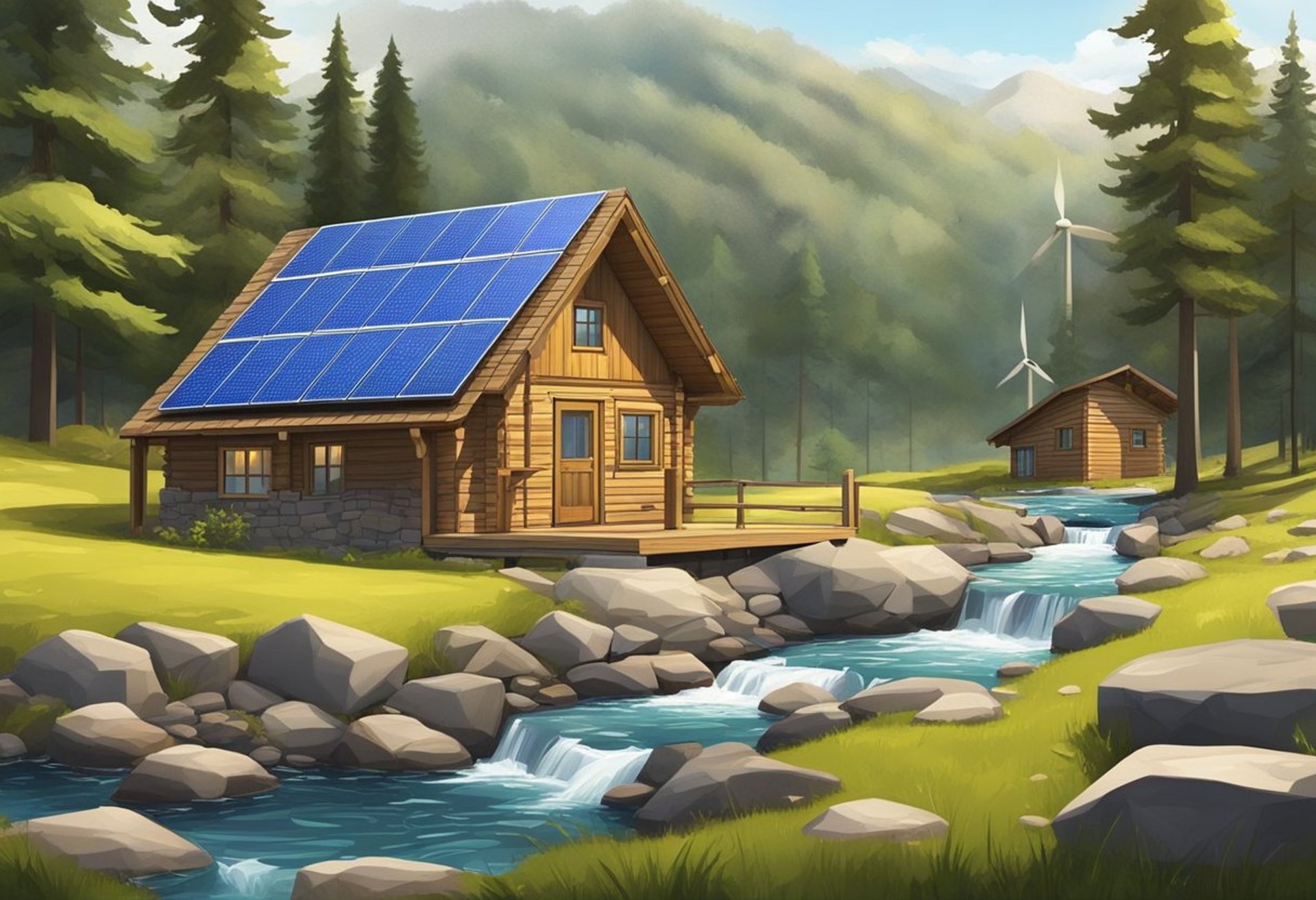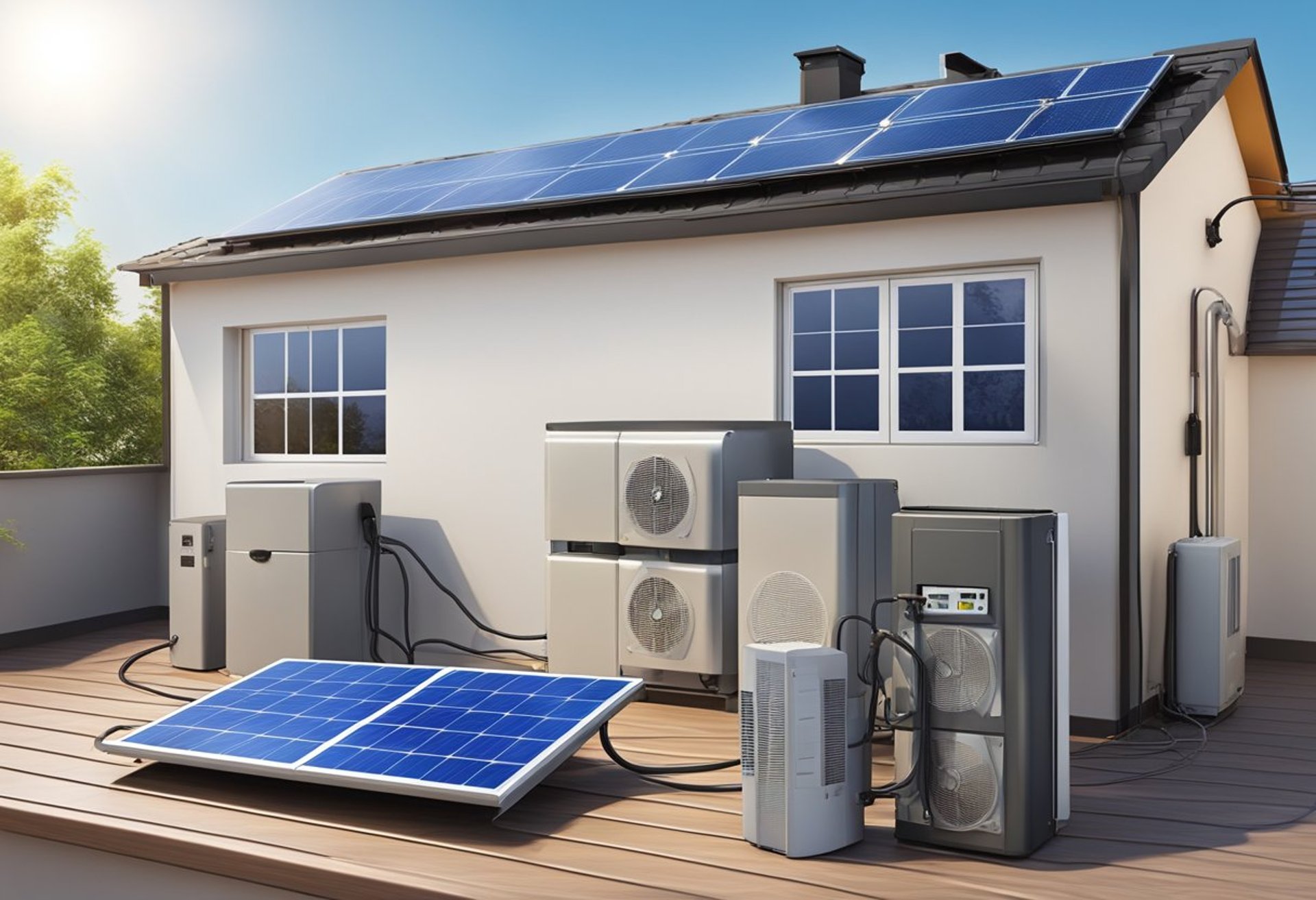Off the Grid Electricity: DIY Solar Solutions for Independence
Off-grid electricity through DIY solar systems offers an appealing solution for those seeking energy independence. By harnessing solar power, individuals can create a sustainable energy source that reduces reliance on traditional utility grids. Building a solar power system allows for customization based on personal energy needs while contributing to environmental conservation.
Understanding the essential components and planning requirements is crucial for anyone considering this venture. Solar panels, batteries, inverters, and charge controllers form the backbone of any off-grid system, and knowing how to properly install and maintain them is vital. With the right information, anyone can successfully set up their system and enjoy all the benefits it provides.
Key Takeaways
DIY solar systems can fulfill individual energy needs efficiently.
Proper planning and understanding of components are essential for success.
Maintenance helps ensure long-term performance and energy reliability.
Understanding Solar Energy
Solar energy is a renewable resource that harnesses sunlight to generate electricity. This section explores the core concepts of solar power, its benefits, and the environmental implications of its use.
Basics of Solar Power
Solar power is generated through the conversion of sunlight into electricity, primarily using photovoltaic (PV) cells found in solar panels. These PV cells are composed of semiconductor materials that produce direct current (DC) electricity when exposed to sunlight.
This electricity can be used immediately or stored in batteries for later use, especially in off-grid solar systems. Solar power systems can be grid-tied, which connects to the local utility, or off-grid, providing complete independence.
The key components of a solar power system include:
Solar Panels: Convert sunlight into electricity.
Inverter: Converts DC to alternating current (AC), which is used in homes.
Battery Storage: Stores electricity for use when sunlight is not available.
Charge Controller: Regulates battery charging to prevent overcharging.
Advantages of Solar Energy
Solar energy offers numerous advantages, making it a popular choice for electricity generation. One major benefit is the reduction in electricity bills, as users harness free energy from the sun after the initial investment.
Additionally, solar power increases energy independence by reducing reliance on fossil fuels and utility grids. It can also enhance property value, attracting buyers interested in sustainable living.
From an economic perspective, the solar industry creates jobs in installation, maintenance, and manufacturing. Various incentives, such as tax credits and rebates, make solar investment more appealing, contributing to long-term savings.
Environmental Impact
The environmental impact of solar energy is predominantly positive. Unlike fossil fuels, solar power generation emits no greenhouse gases or air pollutants, contributing to better air quality and reduced climate change effects.
Solar energy systems also require minimal water for operation, conserving this vital resource compared to conventional power plants. The production and recycling of solar panels, while needing attention, have made significant strides toward sustainability.
Investing in solar energy means choosing a cleaner future. By mitigating reliance on non-renewable resources, it allows individuals and communities to play an active role in combating environmental degradation.
Components of a Solar Power System
Understanding the essential components of a solar power system is crucial for anyone considering a DIY off-grid project. Key elements include solar panels, charge controllers, batteries for storage, and power inverters. Each component plays a specific role in harnessing and managing solar energy effectively.
Solar Panels
Solar panels convert sunlight into electricity through photovoltaic cells. The most common types are monocrystalline, polycrystalline, and thin-film panels. Monocrystalline panels tend to be more efficient and space-efficient but are usually more expensive. Polycrystalline panels are less efficient but can be a more budget-friendly option. Thin-film panels are lightweight and flexible, making them suitable for various applications.
When selecting solar panels, consider their wattage, efficiency ratings, and durability, as these factors influence overall system performance. Most panels come with warranties ranging from 10 to 25 years, providing peace of mind regarding their longevity and efficiency.
Charge Controllers
Charge controllers regulate the flow of electricity from the solar panels to the batteries. They prevent overcharging, which can lead to battery damage and reduce lifespan. There are two main types of charge controllers: PWM (Pulse Width Modulation) and MPPT (Maximum Power Point Tracking).
PWM controllers are simpler and often less expensive, making them suitable for smaller systems. MPPT controllers are more complex and efficient, optimizing the charging process to extract maximum power, especially in larger setups. Choosing the right controller ensures efficient operation and protects the investment in batteries.
Batteries and Storage
Batteries store energy generated by solar panels for use when sunlight is not available. Lead-acid and lithium-ion are the most common battery types used in solar storage systems. Lead-acid batteries are generally cheaper but have a shorter lifespan and lower depth of discharge compared to lithium-ion batteries.
Proper battery sizing is critical to meeting energy needs. Users must calculate their daily power consumption and choose a battery bank capable of providing enough capacity. Additionally, maintaining proper battery health involves regular checks of water levels and ensuring they are kept at optimal temperatures.
Power Inverters
Power inverters convert the direct current (DC) electricity generated by solar panels into alternating current (AC), which is used by most household appliances. There are two primary types of inverters: string inverters and microinverters.
String inverters are typically used for larger systems and are more cost-effective, allowing multiple panels to connect. Microinverters are attached to individual panels, providing better performance in partially shaded conditions. Choosing the right inverter depends on system design and specific energy needs. Properly selecting this component can enhance efficiency and reliability in energy use.
Planning Your Solar Installation
Planning a solar installation requires careful consideration of several key factors. A thorough assessment of the site and an analysis of energy needs are essential steps. Understanding these aspects helps in designing a suitable off-grid solar system that meets specific demands.
Site Assessment
Conducting a site assessment is crucial to determine the viability of a solar installation. This involves examining the physical environment for optimal solar exposure.
The following factors should be evaluated:
Sunlight Exposure: Identify areas that receive maximum sunlight throughout the day.
Shading: Look for potential shading from trees, buildings, or other obstructions.
Roof Orientation and Tilt: Analyze the roof's direction (south-facing is ideal in the Northern Hemisphere) and its angle for optimal panel placement.
Space Availability: Ensure adequate space for solar panels, batteries, and other equipment.
By systematically evaluating these elements, one can ensure the chosen location will effectively harness solar energy.
Energy Consumption Analysis
Understanding energy consumption is vital for designing an effective solar system. This process involves calculating current electricity usage and predicting future needs.
Audit Existing Appliances: List all electrical appliances and devices, noting their wattage and average usage hours.
Total Daily Consumption: Calculate daily energy consumption in kilowatt-hours (kWh).
Future Needs: Consider any planned additions, such as electric vehicles or new appliances, to ensure the system can accommodate increased usage.
This analysis helps in determining the required capacity of the solar system, ensuring it meets the energy demands.
System Sizing
Once the energy consumption is assessed, the next step is system sizing. This involves determining the right number of solar panels and battery capacity.
Solar Panel Output: Research the wattage of the desired solar panels. For example, 100-watt panels might be used.
Battery Storage: Decide on battery type (e.g., lithium or lead-acid) and total capacity needed for off-grid use.
Inverter Sizing: Choose an inverter that matches the system's wattage and can handle peak loads.
Accurate sizing is crucial for achieving both performance and efficiency in the solar installation.
DIY Installation Guidelines
When installing a DIY solar system for off-grid electricity, certain guidelines must be followed to ensure a safe and effective setup. Key considerations include proper mounting techniques, establishing secure electrical connections, and adhering to safety protocols.
Mounting Solar Panels
Proper mounting of solar panels is essential for maximizing energy capture and ensuring stability. First, select an optimal location with maximum sun exposure, typically on a roof or a ground mount. Use strong mounts, preferably aluminum or galvanized steel, to guard against weather conditions.
Secure the panels at a tilt angle of 30 to 45 degrees to enhance performance. Each panel should be attached using stainless steel hardware to prevent corrosion. Regularly check the mounts for tightness, especially after severe weather, to maintain safety and efficiency.
Electrical Connections
Creating secure electrical connections is crucial for system efficiency and safety. Begin with DC-rated cables that match the voltage of your solar panels and inverter. Use MC4 connectors for easy and waterproof connections.
When connecting panels in series or parallel, adhere to the specific wiring configurations to prevent short circuits. Ensure that all connections are tight and insulated with weatherproof tape or heat-shrink tubing.
Finally, connect the solar system to a charge controller before linking it to batteries or an inverter to regulate voltage and prevent overcharging.
Safety Considerations
Safety is paramount throughout the installation process. Before starting, disconnect all power sources to prevent electric shock. Wear suitable personal protective equipment, including gloves and safety glasses, when handling heavy equipment and electrical components.
When working on roofs, utilize safety harnesses and secure ladders to avoid falls. Always adhere to local electrical codes and regulations, including permits, to ensure compliance.
Regularly inspect the system for loose wires or corrosion and routinely check battery levels to confirm they are within safe operating ranges.
Maintenance and Troubleshooting
Regular maintenance and prompt troubleshooting are crucial for ensuring the longevity and efficiency of a DIY off-grid solar system. Knowing how to perform routine checks and address common issues can significantly enhance performance and reliability.
Routine Maintenance
To keep an off-grid solar system operating efficiently, several maintenance tasks should be performed periodically:
Inspect Solar Panels: Ensure panels are clean and free from debris. A clean surface maximizes sunlight absorption.
Check Battery Health: Monitor battery connections and electrolyte levels. Regularly clean terminals to prevent corrosion.
Evaluate Charge Controllers: Ensure the charge controller is functioning correctly. Look out for warning lights or error messages.
Conduct System Tests: Periodically test the entire system to identify any performance drops or faults. Record voltage and current levels.
Inspect Wiring: Check for frayed wires or loose connections, as these can lead to power losses or safety hazards.
By following this schedule, one can significantly increase the system's reliability and efficiency.
Common Issues and Solutions
Troubleshooting common problems associated with off-grid solar systems can help maintain ideal functioning:
Low Battery Charge: If batteries are not charging adequately, check for obstructions on solar panels. Ensure they are positioned correctly to receive sunlight.
Inconsistent Power Supply: Fluctuating output may indicate an issue with wiring or battery connections. Tightening connections may resolve the problem.
Overcharging: If batteries overcharge, check the charge controller settings. Adjust parameters to prevent battery damage.
Reduced Production: If energy production drops, inspect panel angles and shading from nearby trees or structures. Adjust positioning as necessary.
By effectively addressing these common issues, a DIY solar system will remain efficient and reliable for the user.













